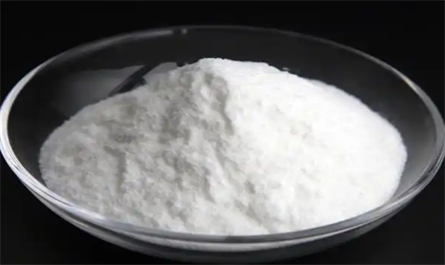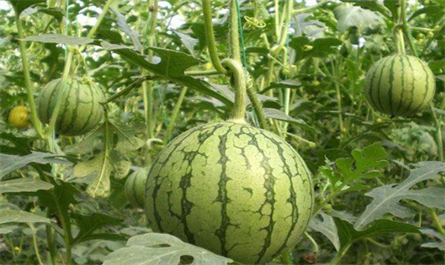How to choose between Triacontanol, Brassinolide, Sodium Nitrophenolates, and DA-6 for fruit enlargement and yield increase?
Triacontanol, Brassinolide, Sodium Nitrophenolates, and Diethyl aminoethyl hexanoate (DA-6) are all commonly used plant growth promoters on the market. Their mechanisms of action and functions are similar. So what are the differences between them?

1. Different mechanisms of action
(1) Triacontanol. Triacontanol mainly enhances the activity of various enzymes such as polyphenol oxidase in plants, improves cell permeability, increases chlorophyll content, and enhances photosynthesis and assimilation. It is the strongest in enhancing the efficacy of other compound agents and is an excellent compound regulator.
(2) Brassinolide. Sodium Nitrophenolates is one of the endogenous hormones in plants, that is, it exists in the plant itself and can directly act on crops by balancing or replacing the functions of other endogenous hormones, such as promoting growth (growth hormone), promoting flowering (gibberellins and cytokinins), promoting fruit expansion (cytokinins and ethylene), etc.
(3) Sodium Nitrophenolates. Sodium Nitrophenolates is a cell activator. It can increase the fluidity of cell fluid. Its mechanism of action is to promote cell division, increase chlorophyll content and the flow rate of cell protoplasm, and accelerate the metabolic rate in plants. However, it is not from the plant itself, so it also acts indirectly.
(4) Diethyl aminoethyl hexanoate (DA-6). Diethyl aminoethyl hexanoate (DA-6) itself is not a hormone that comes from the plant itself, that is, the plant itself does not have it. Its mechanism of action is to indirectly act by regulating the balance of endogenous hormones in the crop body. It can increase the activity of peroxidase and nitrase, and synthesize the nutrients produced by the leaves. The more enzymes, the more nutrients it produces. It can regulate the water balance in the plant body, enhance the cold resistance, drought resistance, and stress resistance of crops, and delay the aging of plants. From this point of view, among the three, atonik has the best effect on improving crop quality and yield.

2. Different requirements for environmental temperature
(1) Brassinolide. Brassinolide is an endogenous hormone of the plant itself. As long as the plant can tolerate the extreme temperature, it can work. Its starting temperature is 20 degrees. The higher the temperature, the faster it works. The lower the temperature, the less obvious the effect of using it. When the temperature is above 30 degrees, the effect of its own brassinolide is greater. Therefore, we should pay attention to the concentration when supplementing brassinolide. High concentrations can also cause poisoning.
(2) Sodium Nitrophenolates. Atonik can work at a minimum temperature of 15 degrees. When the temperature reaches above 25 degrees, the effect is enhanced and can be effective within two days. The effect is more obvious when the temperature reaches 30 degrees, and it can take effect within 24 hours. As the temperature rises, the more active sodium nitrophenolates are, the better the effect.
(3) Diethyl aminoethyl hexanoate (DA-6). In simple terms, it works as long as the plant is alive and as long as there is temperature. Therefore, it can be used at low temperatures to synthesize enzymes and hormones. Therefore, aminoethyl esters are widely used in greenhouse winter crops and some crops planted in early spring, such as watermelons and strawberries, which can be used at very low temperatures.
(4) Triacontanol. Triacontanol has the best effect between 20-25 degrees. This should be paid special attention to. It is not recommended to use Triacontanol in low temperature, high temperature, heavy rain, and strong wind. Brassinolide is used for high temperatures, Triacontanol is used for medium temperatures, and Diethyl aminoethyl hexanoate (DA-6) is used for low temperatures.

3. Different durations of effect
Triacontanol, also known as beeswax alcohol, is a natural biological product purified and extracted from beeswax. Triacontanol is contained in the cell membranes of many plants and is also very fast-acting. Plants react very quickly to Triacontanol. According to relevant experiments, the dry weight of corn seedlings can be measured within 10 minutes after being treated with Triacontanol; the increase in reducing sugar and free amino acid content of rice seedlings can be observed 4 minutes after treatment. The effect on leaf chlorophyll content is greater than that of spraying Brassinolide, but the time to maintain a high chlorophyll level is shorter than that of Brassinolide.
Brassinolide, as an endogenous hormone, can be directly absorbed by crops and directly act on crops. It has the fastest effect, but the duration of effect is relatively short, that is, 10-15 days. Only propionyl brassinolide has a duration of 15-30 days, but its utilization rate is very low.
Sodium Nitrophenolates has a slightly slower onset of action, taking effect 2-3 days after being used on crops, which is faster than Diethyl aminoethyl hexanoate (DA-6) and can last for about 25 days.
Diethyl aminoethyl hexanoate (DA-6) is different from them. It can be used in part and stored in part by crops, which can be released slowly and steadily. Therefore, its effect time will be longer, and the general lasting effect period can reach about 30 days.

4. Different photosynthesis enhancement capabilities
Triacontanol, Diethyl aminoethyl hexanoate (DA-6) and Sodium Nitrophenolates have the strongest ability to enhance photosynthesis. Triacontanol is a fast, low-dose, non-toxic plant growth regulator that can effectively promote protein synthesis in light or no light; Diethyl aminoethyl hexanoate (DA-6) enhances photosynthesis by increasing chlorophyll synthesis and enzyme activity; Sodium Nitrophenolates enhances photosynthesis by increasing chlorophyll content and improving cell activity; Brassinolide has the weakest ability to enhance photosynthesis.
Therefore, for greenhouses or long-term rainy weather, we'd better choose Triacontanol, Diethyl aminoethyl hexanoate (DA-6) and Sodium Nitrophenolates, which have better photosynthesis effects than Brassinolide in weak light conditions.

5. Different stress resistance in crops
It is undeniable that DA-6 is the best, followed by Sodium Nitrophenolates, but Sodium Nitrophenolates is also better in improving fertilizer utilization and drug efficacy. Triacontanol is also very effective in improving fertilizer efficiency and drug efficacy, but Brassinolide and Triacontanol are slightly worse in stress resistance.
Therefore, when choosing these regulators, we should choose according to different crops, different temperatures, and different concentrations. We cannot use them blindly. If used incorrectly, the effect will be much worse.

6. Different modes of action and mass production processes
Triacontanol is definitely the best in terms of the final yield increase effect, because Triacontanol mainly promotes the tricarboxylic acid cycle and enzymatic reactions in glycolysis during photosynthesis, promotes the accumulation of photosynthetic assimilates, and promotes the transfer of nutrients to seeds and fruits, that is, the accumulation of proteins and various amino acids, directly targeting the final yield of crops.
Brassinolide, Sodium Nitrophenolates, and Diethyl aminoethyl hexanoate (DA-6) all indirectly increase physiological processes or cell activity to ultimately lead to the accumulation of proteins and amino acids. In comparison, Triacontanol is obviously the best. However, Brassinolide, Sodium Nitrophenolates, and Diethyl aminoethyl hexanoate (DA-6) all have mature production processes, and mass production and use effects have little impact on them.
However, Triacontanol has its specificity of effect, and has strong targeted effects on the function of cell membranes and enzymatic reactions. For example, Triacontanol has a good effect, but octacosanol not only has no effect, but can also inhibit the effect of Triacontanol. Therefore, the purification process and mass production process of Triacontanol require higher requirements.
If the purity of Triacontanol is increased to 99.79%, the interference of other components can be reduced, and its effect can be significantly enhanced; in addition, avoid using containers or pipes made of polyvinyl chloride materials during application, because phthalate is a bioplasticizer of the material, and both octacosanol and phthalate can affect its physiological effects.

In addition to the above products, there are many other growth promoter products on the market, such as Gibberellic Acid (GA3), Ethephon, 1-Naphthyl Acetic Acid (NAA), etc. Each product has a different mechanism of action and plays a different role, so it should be used flexibly according to the actual situation.
if you need related plant growth regulator mentoned above,such as Triacontanol、Diethyl aminoethyl hexanoate(DA-6) and Sodium Nitrophenolates、Brassinolide、Gibberellic Acid(GA3)、Ethephon、1-Naphthyl Acetic Acid(NAA)..we supply high quality product for you!welcome contact admin@agriplantgrowth.com

1. Different mechanisms of action
(1) Triacontanol. Triacontanol mainly enhances the activity of various enzymes such as polyphenol oxidase in plants, improves cell permeability, increases chlorophyll content, and enhances photosynthesis and assimilation. It is the strongest in enhancing the efficacy of other compound agents and is an excellent compound regulator.
(2) Brassinolide. Sodium Nitrophenolates is one of the endogenous hormones in plants, that is, it exists in the plant itself and can directly act on crops by balancing or replacing the functions of other endogenous hormones, such as promoting growth (growth hormone), promoting flowering (gibberellins and cytokinins), promoting fruit expansion (cytokinins and ethylene), etc.
(3) Sodium Nitrophenolates. Sodium Nitrophenolates is a cell activator. It can increase the fluidity of cell fluid. Its mechanism of action is to promote cell division, increase chlorophyll content and the flow rate of cell protoplasm, and accelerate the metabolic rate in plants. However, it is not from the plant itself, so it also acts indirectly.
(4) Diethyl aminoethyl hexanoate (DA-6). Diethyl aminoethyl hexanoate (DA-6) itself is not a hormone that comes from the plant itself, that is, the plant itself does not have it. Its mechanism of action is to indirectly act by regulating the balance of endogenous hormones in the crop body. It can increase the activity of peroxidase and nitrase, and synthesize the nutrients produced by the leaves. The more enzymes, the more nutrients it produces. It can regulate the water balance in the plant body, enhance the cold resistance, drought resistance, and stress resistance of crops, and delay the aging of plants. From this point of view, among the three, atonik has the best effect on improving crop quality and yield.

2. Different requirements for environmental temperature
(1) Brassinolide. Brassinolide is an endogenous hormone of the plant itself. As long as the plant can tolerate the extreme temperature, it can work. Its starting temperature is 20 degrees. The higher the temperature, the faster it works. The lower the temperature, the less obvious the effect of using it. When the temperature is above 30 degrees, the effect of its own brassinolide is greater. Therefore, we should pay attention to the concentration when supplementing brassinolide. High concentrations can also cause poisoning.
(2) Sodium Nitrophenolates. Atonik can work at a minimum temperature of 15 degrees. When the temperature reaches above 25 degrees, the effect is enhanced and can be effective within two days. The effect is more obvious when the temperature reaches 30 degrees, and it can take effect within 24 hours. As the temperature rises, the more active sodium nitrophenolates are, the better the effect.
(3) Diethyl aminoethyl hexanoate (DA-6). In simple terms, it works as long as the plant is alive and as long as there is temperature. Therefore, it can be used at low temperatures to synthesize enzymes and hormones. Therefore, aminoethyl esters are widely used in greenhouse winter crops and some crops planted in early spring, such as watermelons and strawberries, which can be used at very low temperatures.
(4) Triacontanol. Triacontanol has the best effect between 20-25 degrees. This should be paid special attention to. It is not recommended to use Triacontanol in low temperature, high temperature, heavy rain, and strong wind. Brassinolide is used for high temperatures, Triacontanol is used for medium temperatures, and Diethyl aminoethyl hexanoate (DA-6) is used for low temperatures.

3. Different durations of effect
Triacontanol, also known as beeswax alcohol, is a natural biological product purified and extracted from beeswax. Triacontanol is contained in the cell membranes of many plants and is also very fast-acting. Plants react very quickly to Triacontanol. According to relevant experiments, the dry weight of corn seedlings can be measured within 10 minutes after being treated with Triacontanol; the increase in reducing sugar and free amino acid content of rice seedlings can be observed 4 minutes after treatment. The effect on leaf chlorophyll content is greater than that of spraying Brassinolide, but the time to maintain a high chlorophyll level is shorter than that of Brassinolide.
Brassinolide, as an endogenous hormone, can be directly absorbed by crops and directly act on crops. It has the fastest effect, but the duration of effect is relatively short, that is, 10-15 days. Only propionyl brassinolide has a duration of 15-30 days, but its utilization rate is very low.
Sodium Nitrophenolates has a slightly slower onset of action, taking effect 2-3 days after being used on crops, which is faster than Diethyl aminoethyl hexanoate (DA-6) and can last for about 25 days.
Diethyl aminoethyl hexanoate (DA-6) is different from them. It can be used in part and stored in part by crops, which can be released slowly and steadily. Therefore, its effect time will be longer, and the general lasting effect period can reach about 30 days.

4. Different photosynthesis enhancement capabilities
Triacontanol, Diethyl aminoethyl hexanoate (DA-6) and Sodium Nitrophenolates have the strongest ability to enhance photosynthesis. Triacontanol is a fast, low-dose, non-toxic plant growth regulator that can effectively promote protein synthesis in light or no light; Diethyl aminoethyl hexanoate (DA-6) enhances photosynthesis by increasing chlorophyll synthesis and enzyme activity; Sodium Nitrophenolates enhances photosynthesis by increasing chlorophyll content and improving cell activity; Brassinolide has the weakest ability to enhance photosynthesis.
Therefore, for greenhouses or long-term rainy weather, we'd better choose Triacontanol, Diethyl aminoethyl hexanoate (DA-6) and Sodium Nitrophenolates, which have better photosynthesis effects than Brassinolide in weak light conditions.

5. Different stress resistance in crops
It is undeniable that DA-6 is the best, followed by Sodium Nitrophenolates, but Sodium Nitrophenolates is also better in improving fertilizer utilization and drug efficacy. Triacontanol is also very effective in improving fertilizer efficiency and drug efficacy, but Brassinolide and Triacontanol are slightly worse in stress resistance.
Therefore, when choosing these regulators, we should choose according to different crops, different temperatures, and different concentrations. We cannot use them blindly. If used incorrectly, the effect will be much worse.

6. Different modes of action and mass production processes
Triacontanol is definitely the best in terms of the final yield increase effect, because Triacontanol mainly promotes the tricarboxylic acid cycle and enzymatic reactions in glycolysis during photosynthesis, promotes the accumulation of photosynthetic assimilates, and promotes the transfer of nutrients to seeds and fruits, that is, the accumulation of proteins and various amino acids, directly targeting the final yield of crops.
Brassinolide, Sodium Nitrophenolates, and Diethyl aminoethyl hexanoate (DA-6) all indirectly increase physiological processes or cell activity to ultimately lead to the accumulation of proteins and amino acids. In comparison, Triacontanol is obviously the best. However, Brassinolide, Sodium Nitrophenolates, and Diethyl aminoethyl hexanoate (DA-6) all have mature production processes, and mass production and use effects have little impact on them.
However, Triacontanol has its specificity of effect, and has strong targeted effects on the function of cell membranes and enzymatic reactions. For example, Triacontanol has a good effect, but octacosanol not only has no effect, but can also inhibit the effect of Triacontanol. Therefore, the purification process and mass production process of Triacontanol require higher requirements.
If the purity of Triacontanol is increased to 99.79%, the interference of other components can be reduced, and its effect can be significantly enhanced; in addition, avoid using containers or pipes made of polyvinyl chloride materials during application, because phthalate is a bioplasticizer of the material, and both octacosanol and phthalate can affect its physiological effects.

In addition to the above products, there are many other growth promoter products on the market, such as Gibberellic Acid (GA3), Ethephon, 1-Naphthyl Acetic Acid (NAA), etc. Each product has a different mechanism of action and plays a different role, so it should be used flexibly according to the actual situation.
if you need related plant growth regulator mentoned above,such as Triacontanol、Diethyl aminoethyl hexanoate(DA-6) and Sodium Nitrophenolates、Brassinolide、Gibberellic Acid(GA3)、Ethephon、1-Naphthyl Acetic Acid(NAA)..we supply high quality product for you!welcome contact admin@agriplantgrowth.com



